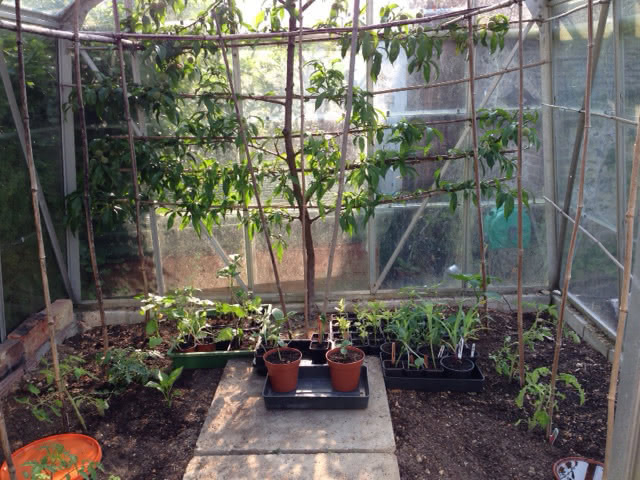This clay pot irrigation is an adaptation of an ancient method that is thought to have originated in Africa 4,000 years ago. It uses the porous nature of clay pots to allow osmotic pressure to suck the water into the soil where it is needed. People use beautiful fired pots called Olla with a narrow neck buried in the soil.

Unless you can make them yourself, this may prove an expensive solution so here’s an inexpensive and simple alternative.
Get hold of an ordinary 25cm (10 inch) terracotta pot. Plug the hole with a wine cork. Bury it almost up to its neck in the soil but not too deep so that soil falls into the pot. Fill it with water. Add a terracotta lid. And voila – clay pot irrigation.
Plant seedlings or sow seeds 18 inches around the base of the pot. Water will slowly seep out through the clay wall of the pot, directly irrigating the soil around the pot. As the roots grow they will wrap themselves around the pot. The plants takes up almost all the water, and because the water source is now in the ground, evaporation is almost nil.
Keep the pot filled up and you will provide a steady source of irrigation when your plants need it.
I am trying this in my greenhouse between tomato, chilli, basil, thyme, parsley and tarragon plants this summer and see how often I need to replenish the pots and how much I can reduce watering as well.

Polyculture: higher yields; less water
Energy Cycling – An Original Permaculture Design Principle
Maddy Harland is also author of Fertile Edges: Regenerating Land, Culture and Hope
Maddy Harland is the co-founder and editor of Permaculture magazine and author of Fertile Edges – Regenerating the land, culture and hope.





